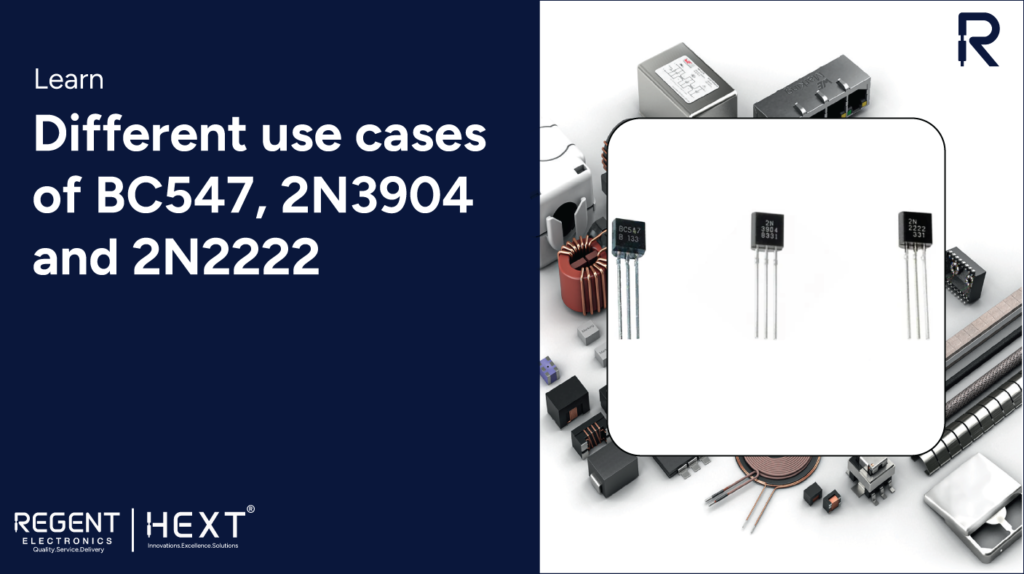
Different Use Cases of BC547, 2N3904, and 2N2222 Transistors
Transistors are vital components in electronic circuits, serving as amplifiers and switches. Among the most commonly used transistors are the BC547, 2N3904, and 2N2222. This blog explores their unique features, applications, and characteristics to help you make the most informed choice for your projects.
Understanding Transistors
A transistor is a current-controlled device with three terminals: the emitter, collector, and base. These terminals enable its two primary functions—amplification and switching—making it an indispensable part of electronic devices.
BC547 Transistor
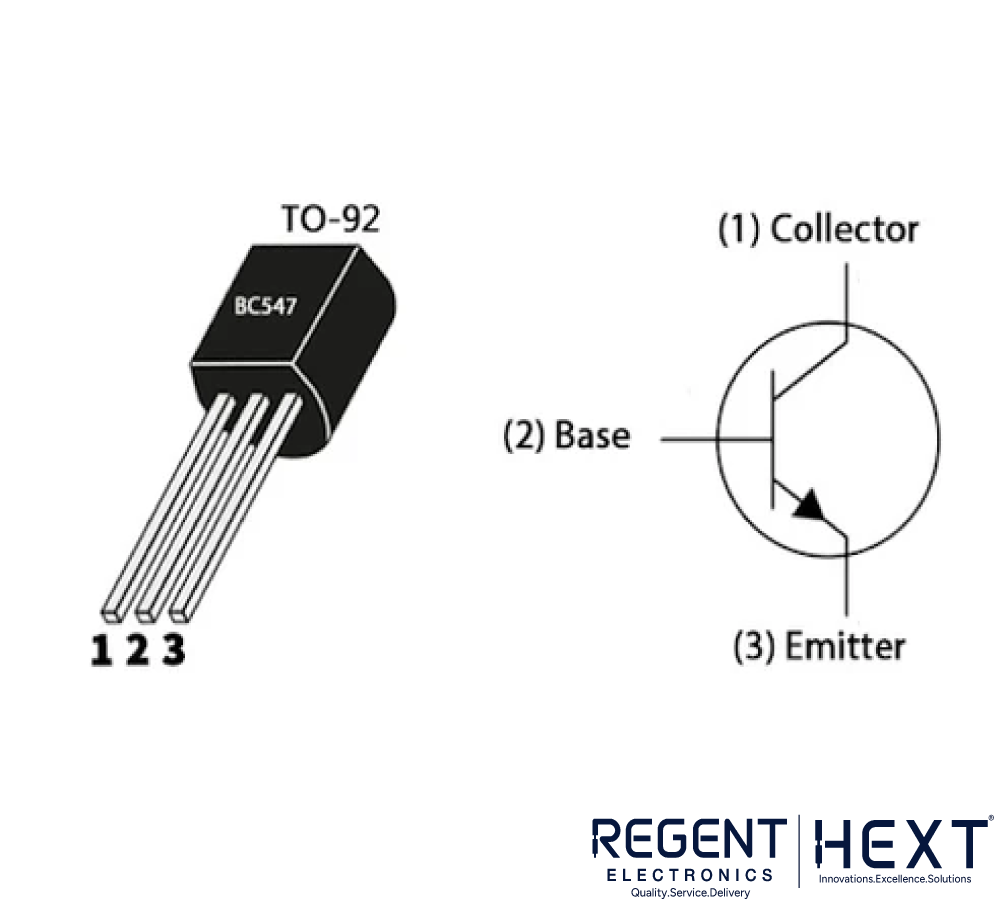
The BC547 is an NPN (Negative-Positive-Negative) transistor, a type of Bipolar Junction Transistor (BJT) designed for general-purpose amplification and switching. This silicon-based transistor has three layers and three terminals: emitter (E), collector (C), and base (B).

Key Features
- Gain Range: 110 to 800 (determines amplification capability)
- Maximum Collector Current: 100mA
- Base Current: Limited to 5mA (excess current can damage the transistor)
- Package Type: TO-92
Applications
- General switching and amplification
- Driver modules for LEDs and electronic relays
- Darlington pair circuits
- Audio preamplifiers
- PWM (Pulse Width Modulation) applications
- Heat and light sensor circuits
LED Controlling Circuit

When used as a switch, the BC547 operates in saturation (on) and cut-off (off) regions. A base current is applied to allow collector current to flow through the emitter. A resistor is used to limit base current, calculated using the formula:
Rb = Vbe / Ib
BC547 as an Amplifier
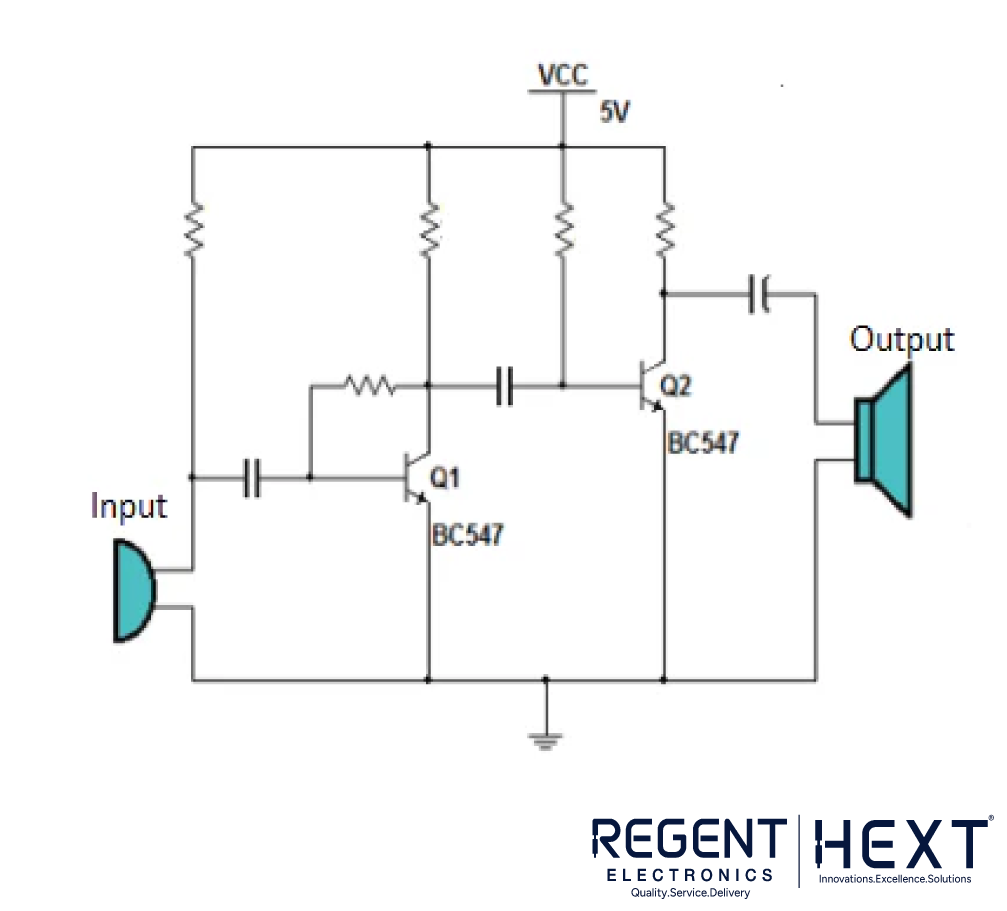
In the active region, the BC547 functions as an amplifier. The transistor’s DC current gain is calculated using:
DC Current Gain = Ic / Ib
The amplified output is collected across the reverse-biased junction of the transistor.
2N3904 Transistor
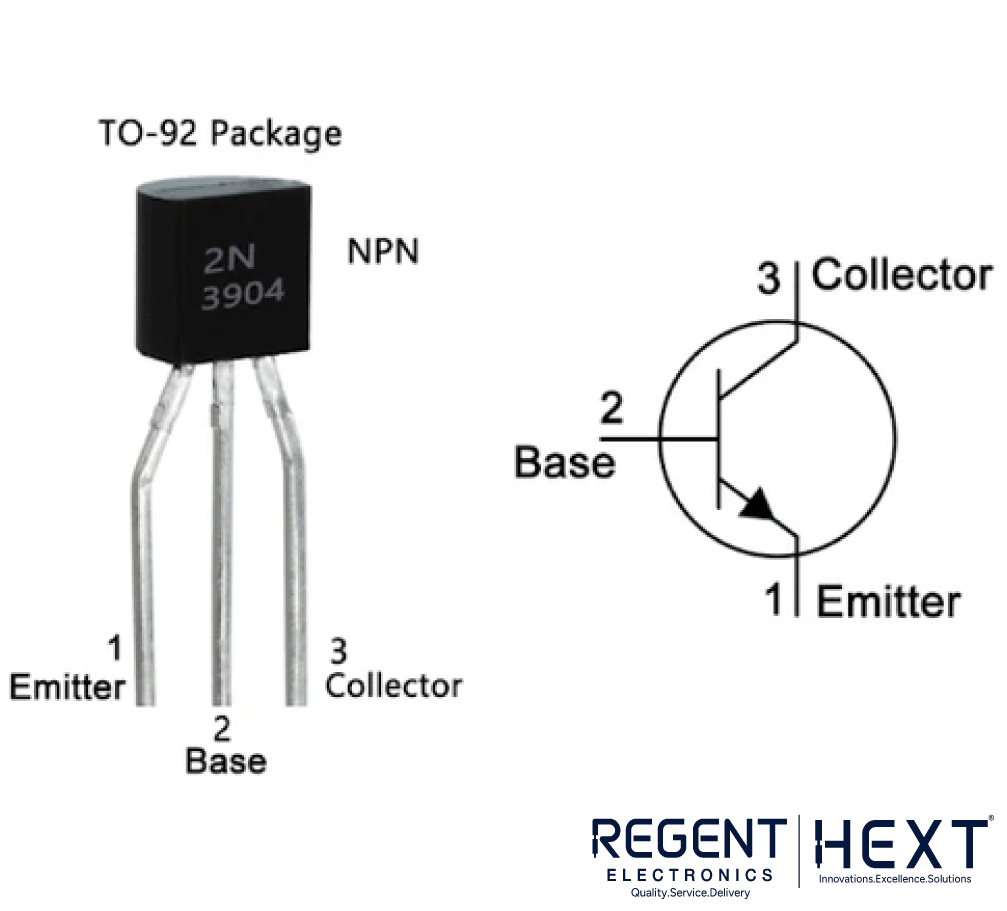
The 2N3904 is a silicon NPN transistor widely used for general-purpose switching and amplification. Its design allows it to handle medium voltage, lower currents, and moderate power dissipation.
Key Features
- Maximum Collector Current: 200mA
- Power Dissipation: 625mW
- Gain Value: 300
- Voltage Tolerance: VCB and VCE up to 40V
- Package Type: TO-92
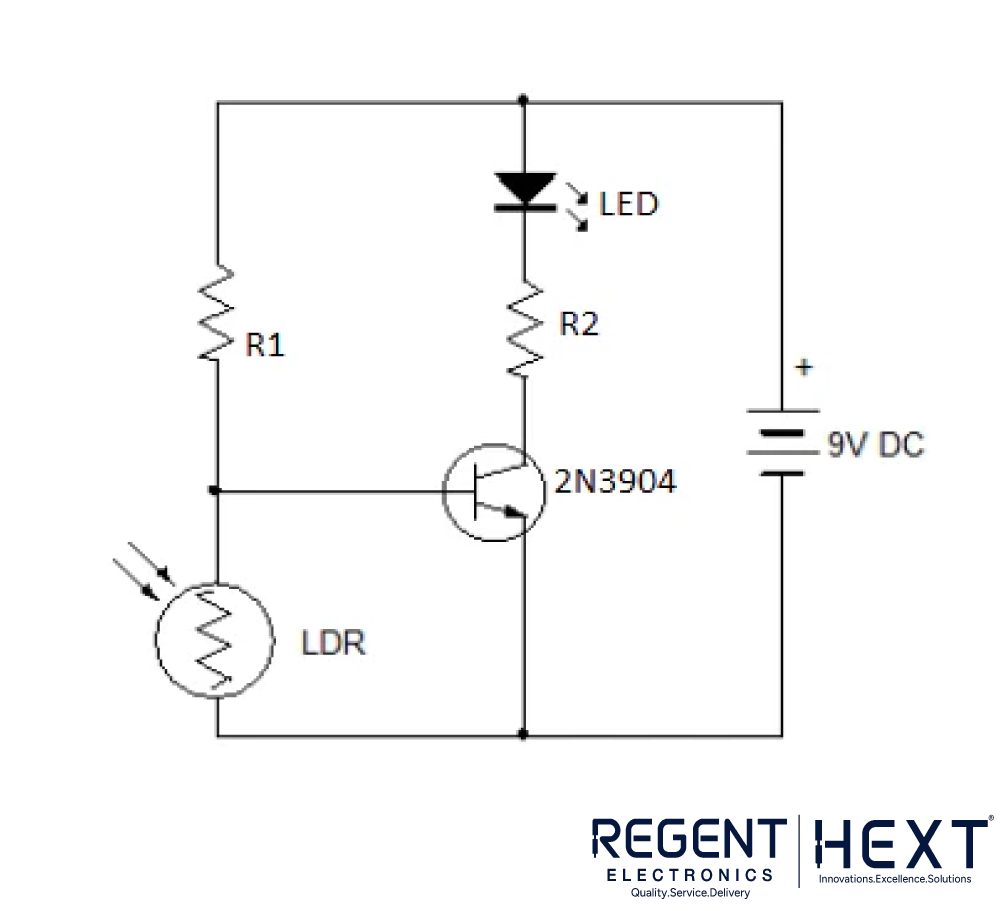
Applications
- Driver modules (e.g., relays, LEDs)
- Audio and signal amplifiers
- Voltage-controlled loads up to 40V
- Commonly used in home appliances and TV circuits
2N2222 Transistor

The 2N2222 is one of the most versatile NPN BJTs. Enclosed in a TO-18 package, it is known for its ability to handle high currents and perform effectively in amplification and switching applications.
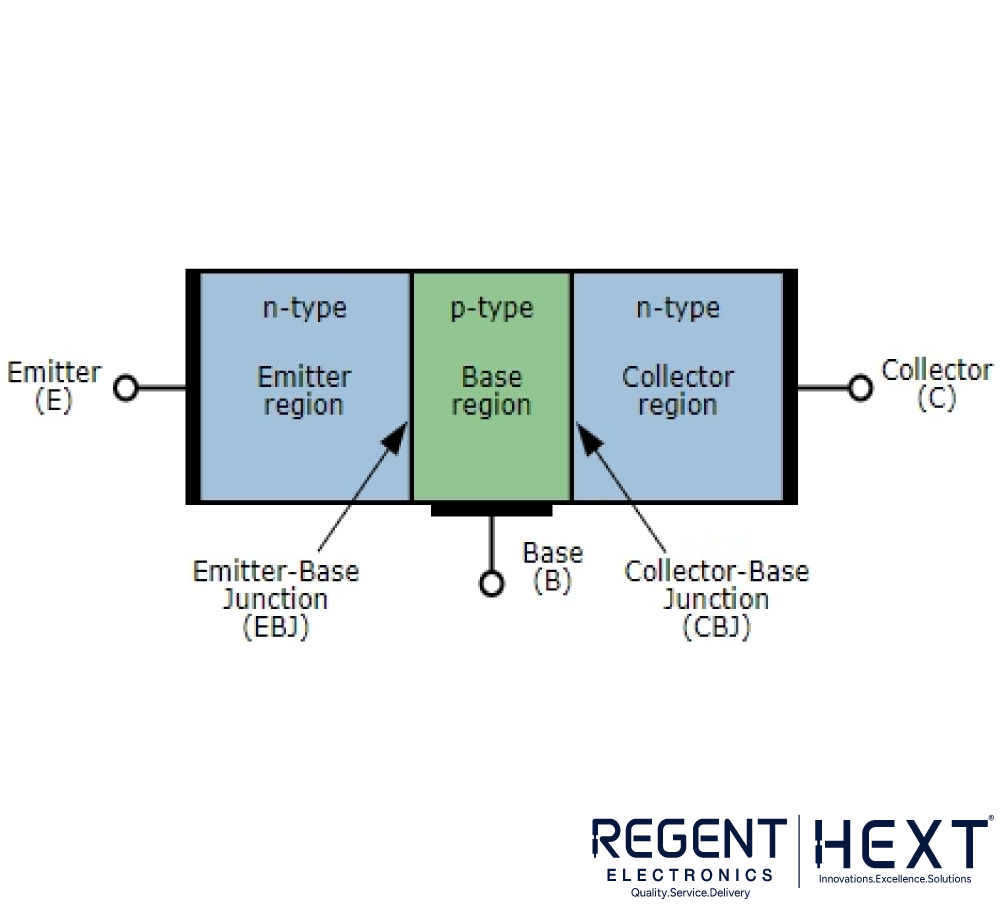
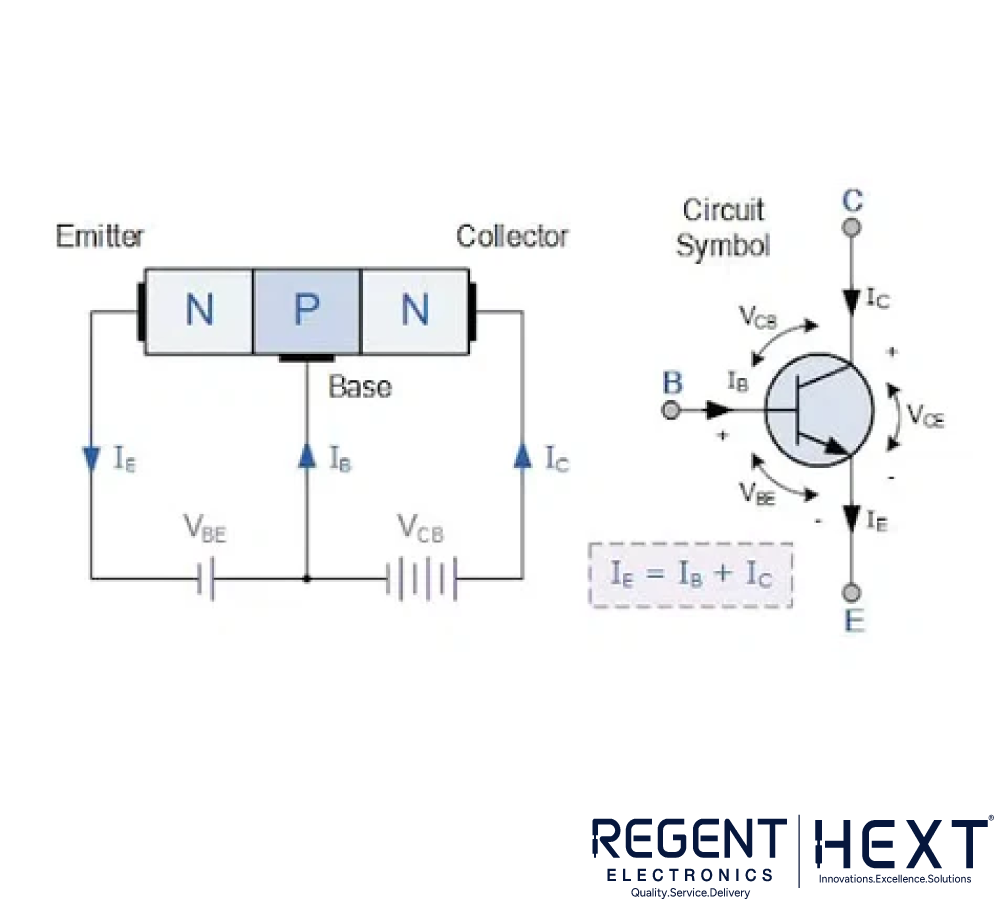
Key Features
- Maximum Collector Current: 800mA
- Power Dissipation: 500mW
- Gain Value: 75
- Transition Frequency: 250MHz
- Package Type: TO-18
Applications
- Audio preamplifiers
- PWM circuits (quick response time)
- Automation and embedded projects
- RF circuits
- Sensor circuits
- Switching multiple loads simultaneously
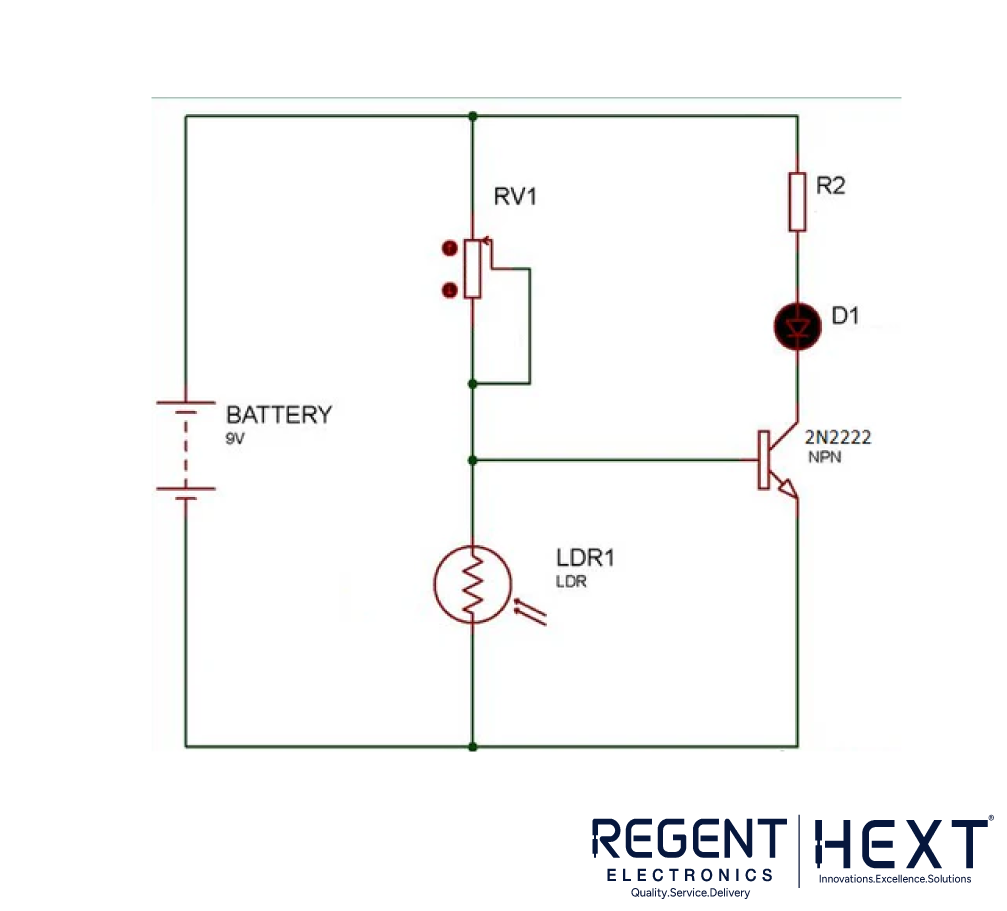
2N2222 as a Switch
With a high collector current capacity, the 2N2222 is ideal for driving larger loads compared to the BC547. It is widely used in embedded systems requiring efficient switching.
Comparison Table
| Feature | BC547 | 2N3904 | 2N2222 |
| Package | TO-92 | TO-92 | TO-18 |
| Type | NPN | NPN | NPN |
| Collector-Base Voltage | 50V | 60V | 60V |
| Collector-Emitter Voltage | 45V | 40V | 30V |
| Emitter-Base Voltage | 6V | 6V | 5V |
| DC Current Gain | 800 | 300 | 75 |
| Base Current | 200mA | 50mA | 200mA |
| Collector Current | 100mA | 200mA | 800mA |
| Transition Frequency | 300MHz | 300MHz | 250MHz |
| Power Dissipation | 500mW | 625mW | 500mW |
| Noise | 10dB | 5dB | 4dB |
| Max Junction Temp | 150°C | 150°C | 150°C |
Conclusion
Whether you are designing a switching circuit or amplifying signals, understanding the features of these transistors is critical. The BC547 is suitable for low-current applications, the 2N3904 works well for medium loads, and the 2N2222 is perfect for high-current and embedded applications. By choosing the right transistor, you can optimize performance and reliability in your projects.
